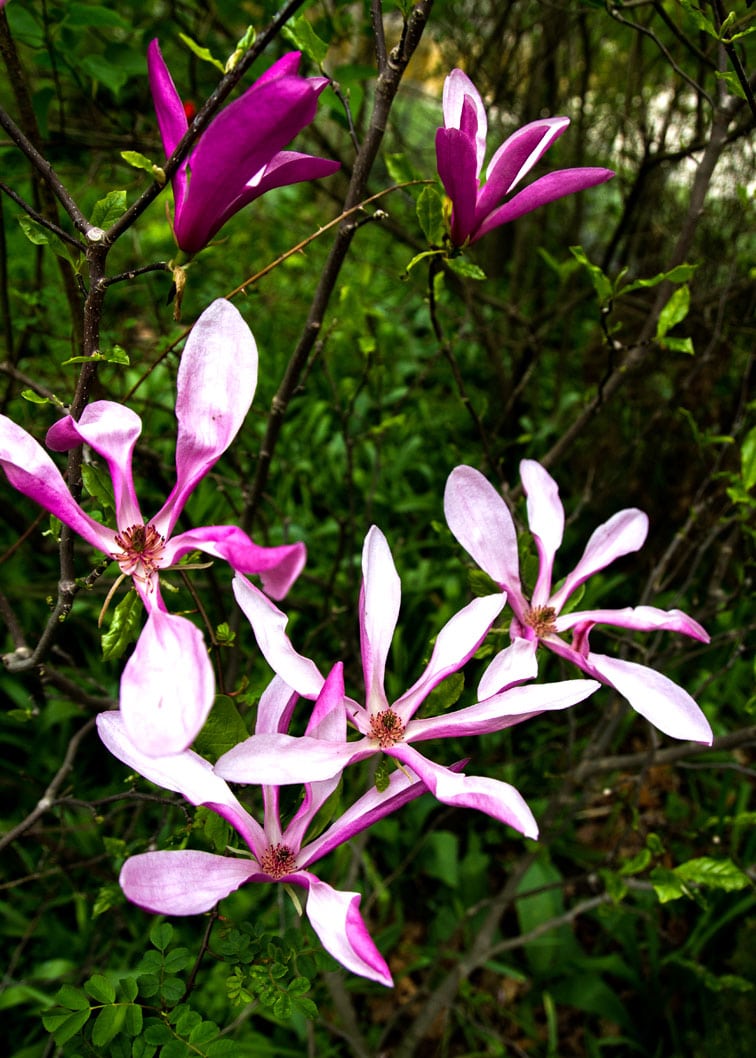
Many of the early-blooming magnolias (such as cultivars of M. stellata and M. x soulangeana) were tricked into opening early, only to be burned by sharply falling temperatures a few days later. Magnolias are fools when it comes to sudden warmth and throw caution to the wind, rapidly popping buds and splaying open their flowers. I was fortunate to avoid this fate with my ‘Susan’ magnolia (a cross between M. liliiflora ‘Nigra and M. stellata ‘Rosea’), which opened its flowers last week and continues to bloom.
An infection of bark scales devastated my first collection of seven magnolias several years ago. Some years passed without magnolias in my garden, which is as painful a deprivation as the absence of roses. Cautiously, I began bringing magnolias back, watching carefully for the scale insects. The first re-introduction was ‘Susan’, a compact shrubby plant (8 x 8 ft / 2.5 x 2.5 m, Zone 5) with rounded form good for specimen planting or for informal hedging in a large open space. The mildly scented flowers have strappy purple-pink petals, opening from dark purple buds. The colourful display lasts about three weeks in cool weather.
Last year I planted a young ‘Butterflies’ magnolia (16 x 8 ft / 5 m x 2.5 m, Zone 6) with non-fading bright yellow flowers, broad leaves and a pyramidal shape. My specimen is a multi-stem shrub, and can be pruned to keep an airy, open form. So far it has clean bark with no sign of scales, and I hope the cycle was broken by starving the scales out. Bringing magnolias back into the garden is a risk I’m willing to take in order to enjoy these gorgeous plants.
Other posts by Judith this week:
Posts by Judith last week:
